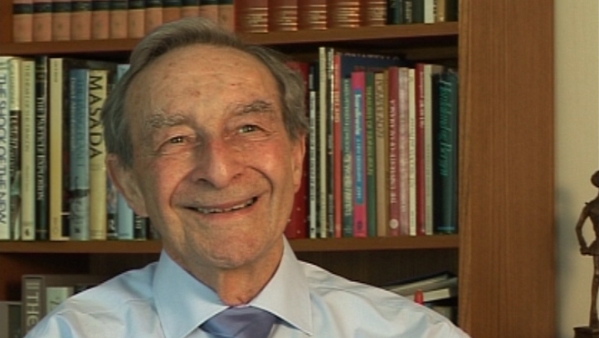NEXT STORY

Applying for a lectureship at Nottingham after getting married
RELATED STORIES

NEXT STORY

Applying for a lectureship at Nottingham after getting married
RELATED STORIES


|
Views | Duration | |
|---|---|---|---|
| 81. How the Nazis destroyed northern Norway | 103 | 02:01 | |
| 82. Being saved by two Lapp women | 54 | 02:59 | |
| 83. Experiences in Jotunheimen | 46 | 01:00 | |
| 84. Summing up the Cambridge experience | 55 | 01:51 | |
| 85. The possibilities after Cambridge | 45 | 00:57 | |
| 86. GLEEP: The beginning of the British nuclear programme | 57 | 01:30 | |
| 87. Obtaining a Harwell research fellowship | 44 | 01:24 | |
| 88. Inefficient deuterium research at Harwell | 48 | 02:39 | |
| 89. Applying for a lectureship at Nottingham after getting married | 67 | 01:18 | |
| 90. The increasing number of British universities | 61 | 02:51 |


As far as actual novel research goes, it was not particularly productive, I think, for a reason which is a little hard to say politely. But the fact is that I was put in a group of physical chemistry whereas I was an inorganic chemist and the head of the physical group was rather annoyed, I think, that he was foisted off with someone who just wanted to do inorganic chemical experiments with isotopes. And so… though, I didn’t find this out till later when I put in requests for chemicals and instruments and things to do the work, it took inordinately long because the supply chain had a weak link in it, would be the politest way of saying it.
However, I did do some work and some of the work that I started doing was to make use of, interestingly, a non-radioactive isotope – deuterium. Clearly heavy water is an important component of thinking in atomic reactors for moderating the nuclear reactors. So there was a plentiful supply of D2O, deuterium oxide, heavy water, which was not very generally available and was certainly enormously expensive whereas at Harwell there was a lot of it. So I used this and I used the fact also that boron trifluoride was an important component – I needn’t go into the details, but boron was also a moderator for the pile, so that was… the boron isotopes absorbed neutrons so that was one way of controlling things, so there was some boron trifluoride around as well.
So I put these two together and made BF3 di (deuterium oxide), the heavy water equivalent of the H2O compound I was talking about earlier. And by comparing those we got a lot of extra information about the systems. That bit, I think, was about all that came out of it, but for me it was an important couple of years.
Norman Greenwood (1925-2012) was born in Australia and graduated from Melbourne University before going to Cambridge. His wide-ranging research in inorganic and structural chemistry made major advances in the chemistry of boron hydrides and other main-group element compounds. He also pioneered the application of Mössbauer spectroscopy to problems in chemistry. He was a prolific writer and inspirational lecturer on chemical and educational themes, and held numerous visiting professorships throughout the world.
Title: Inefficient deuterium research at Harwell
Listeners: Brian Johnson
Professor Brian FG Johnson FRS, FRSE, FRS Chem, FAcad Eu, FAS. Professor of Inorganic Chemistry University of Edinburgh 1991-1995, Professor of Inorganic Chemistry University of Cambridge 1995-2005, Master Fitzwilliam College Cambridge 1999-2005. Research interests include studies of transition metal carbonyls, organometallic chemistry, nano- particles and homogeneous catalysis. Professor Johnson is the author of over 1000 research articles and papers.
Tags: The Atomic Energy Research Establishment
Duration: 2 minutes, 39 seconds
Date story recorded: May 2011
Date story went live: 25 November 2011